Spitz
A spitz (the name derives from the German word spitz, meaning "pointed", in reference to the pointed muzzle) is a type of domestic dog consisting of 68 breeds, characterized by long, thick (and often white) fur, and by pointed ears and muzzles. The tail often curls over the dog's back or droops. While all of the breeds resemble primitive dogs, smaller breeds resemble foxes, while larger breeds resemble jackals, coyotes, wolves, and even dingoes.
The exact origins of spitz dogs remain unknown, though most of the spitzes seen today originate from the Arctic region or from Siberia.[1] Johann Friedrich Gmelin described the type as Canis pomeranus in his 1788 revision of Systema Naturae.[2]
Characteristics
Spitzes are well suited to living in harsh northern climates. They often have an insulating, waterproof undercoat that is denser than the topcoat to trap warmth. Small, upright ears help to reduce the risk of frostbite, square proportions and thick fur that grows on the paws protects the dogs from sharp ice. Many spitz breeds, like the Japanese Akita and Chow Chow, retain wolf-like characteristics like independence, suspiciousness, and aggression towards unfamiliar humans and other dogs, and they require much training and socialization when they are puppies before they become manageable in an urban environment. Some, such as the Karelian Bear Dog, are more difficult to train as companion dogs. Some breeds, such as the Pomeranian, have manes. Several spitz breeds (such as huskies) are bred for one purpose only. However it is common for many spitz breeds (such as the Russian laikas) to be general purpose dogs in their native lands, used for hunting, hauling, herding, and guarding.[3]
Companions and toys
Spitzes, with their thick fur, fluffy ruffs, curled tails and small muzzles and ears, have been bred into non-working dogs designed to be companions or lap dogs. This trend is most evident in the tiny Pomeranian, which was originally a much larger dog closer to the size of a Keeshond before being bred down to make an acceptable court animal.
The Keeshond, the Wolfspitz variety of the German Spitz, is an affectionate, loyal, and very energetic pet that was bred as a watchdog for barges (hence the name Dutch Barge Dog). Often, these breeds are recognized for their "smiling" mouths. Other spitzes that have been bred away from working uses are the American Eskimo Dog, Alaskan Klee Kai, German Spitz, Volpino Italiano and Japanese Spitz.[4]
Spitz breeds
Sled dogs
| Alaskan husky |  |
Origin: Alaska, United States | Alaskan Malamute | 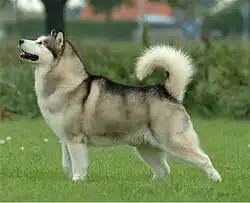 |
Origin: Alaska, United States |
| Canadian Eskimo Dog |  |
Origin: Northern Canada | Chinook |  |
Origin: United States |
| Chukotka sled dog | 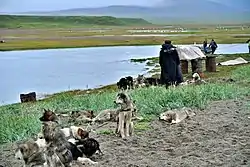 |
Origin: Russia and Siberia | Greenland Dog | 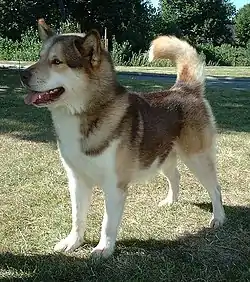 |
Origin: Greenland |
| Mackenzie River husky |  |
Origin: Alaska, United States | Siberian Husky |  |
Origin: Siberia, Russia |
| Samoyed | 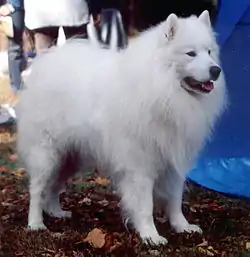 |
Origin: Northwest Russia and Western Siberia | Yakutian Laika |  |
Origin: the Sakha Republic |
| Sakhalin Husky | 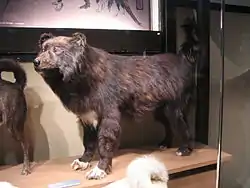 |
Origin: Sakhalin, Russia |
Hunting dogs
| Black Norwegian Elkhound | 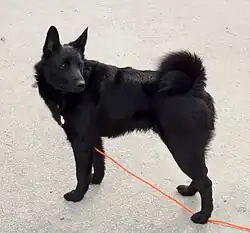 |
Origin: Norway | East Siberian Laika |  |
Origin: east of the Yenisei River |
| Finnish Spitz |  |
Origin: Finland | Hällefors Elkhound |  |
Origin: Svealand, Sweden |
| Hokkaido |  |
Origin: Hokkaido, Japan | Jindo | 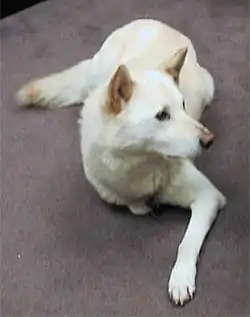 |
Origin: Jindo, South Korea |
| Kai Ken |  |
Origin: Japan | Karelian Bear Dog |  |
Origin: Karelia |
| Karelo-Finnish Laika | .JPG.webp) |
Origin: Karelia | Kawakami Inu |  |
Origin: Japan |
| Kishu Ken |  |
Origin: Japan | Norrbottenspets | 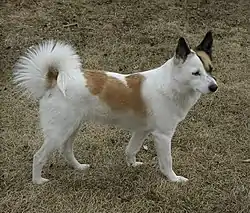 |
Origin: Norrbotten, Sweden |
| Norwegian Elkhound |  |
Origin: Norway | Norwegian Lundehund |  |
Origin: Norway |
| Pungsan dog |  |
Origin: North Korea | Russo-European Laika | 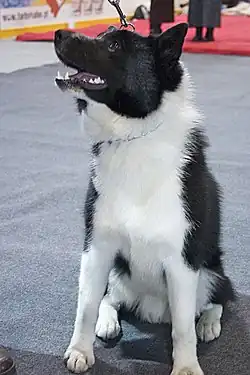 |
Origin: European Russia |
| Shiba Inu |  |
Origin: Japan | Shikoku | 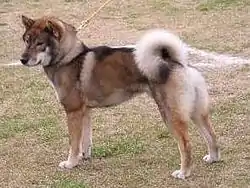 |
Origin: Shikoku, Japan |
| Swedish Elkhound |  |
Origin: Jämtland, Sweden | Swedish White Elkhound |  |
Origin: Jämtland, Sweden |
| Taiwan Dog | 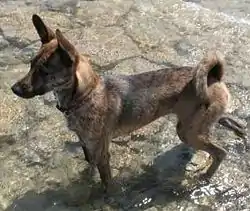 |
Origin: Taiwan | West Siberian Laika | 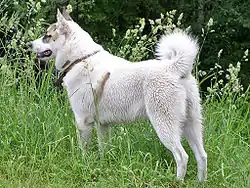 |
Origin: Russia |
| Zerdava |  |
Origin: Georgia and Turkey |
Herding dogs
| Cardigan Welsh Corgi |  |
Origin: Wales | Dikkulak | Origin: Turkey | |
| Finnish Lapphund |  |
Origin: Lapland, Finland | Icelandic Sheepdog | 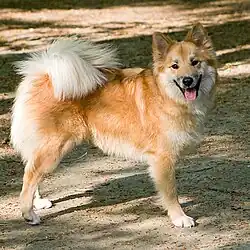 |
Origin: Iceland |
| Lapponian Herder |  |
Origin: Finland | Nenets Herding Laika | 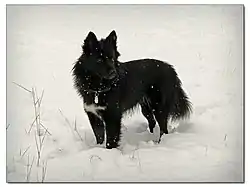 |
Origin: Russia |
| Norwegian Buhund | 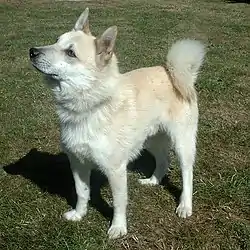 |
Origin: Norway | Pembroke Welsh Corgi |  |
Origin: Wales |
| Swedish Lapphund |  |
Origin: Lapland, Sweden | Swedish Vallhund | 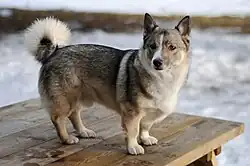 |
Origin: Västergötland |
Asian breeds
| Akita |  |
Origin: Akita and Odate, Japan | Bắc Hà dog | 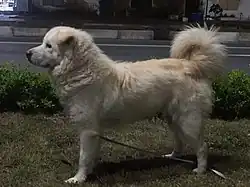 |
Origin: Bắc Hà district and Si Ma Cai district, Lào Cai province, Vietnam |
| Chow Chow | 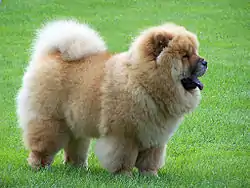 |
Origin: China | Donggyeongi |  |
Origin: Korea |
| Hmong bobtail dog |  |
Origin: Vietnam | Indian Spitz |  |
Origin: India |
| Japanese Spitz |  |
Origin: Japan | Jeju dog | Jeju Island, South Korea | |
| Kintamani |  |
Origin: Kintamani, Bali, Indonesia | Nureongi | Origin: Korea | |
| Ryukyu dog |  |
Okinawa, Japan | Shar Pei | 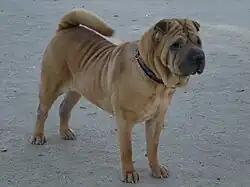 |
Origin: Guangdong, China |
| Thai Bangkaew Dog |  |
Origin: Bang Rakam District, Phitsanulok Province, Thailand | |||
Companion dogs
| Alaskan Klee Kai |  |
Origin: Alaska, United States | American Eskimo Dog | 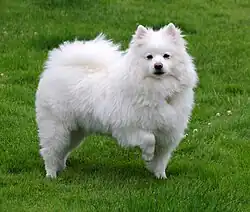 |
Origin: Germany |
| Danish Spitz |  |
Origin: Denmark | Eurasier |  |
Origin: Weinheim, Germany |
| Grossspitz |  |
Origin: Germany | Keeshond | 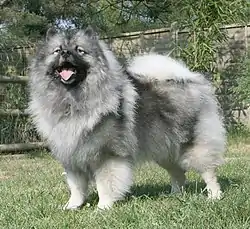 |
Origin: Netherlands |
| Kleinspitz |  |
Origin: Germany | Mittelspitz | 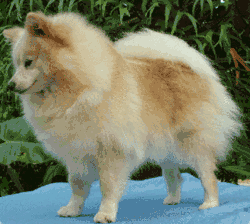 |
Origin: Germany |
| Northern Inuit Dog |  |
Origin: United Kingdom | Pomeranian | 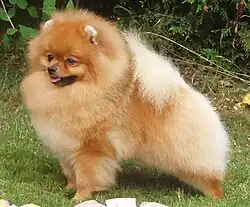 |
Origin: Pomerania, Germany |
| Schipperke |  |
Origin: Belgium | Tonya Finosu |  |
Origin: Turkey |
| Volpino Italiano | .JPG.webp) |
Origin: Italy | |||
Rare Dog Breeds
| Canaan Dog | 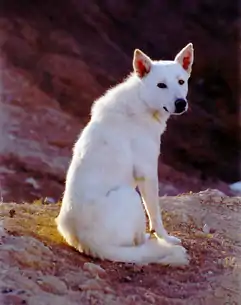 |
Origin: Israel | Carolina Dog | .jpg.webp) |
Origin: The United States |
| Dingo | .jpg.webp) |
Origin: Australia | New Guinea Singing Dog |  |
Origin: New Guinea |
Extinct breeds
| Hare Indian Dog | 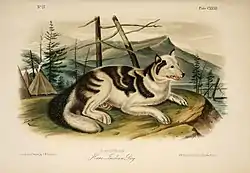 |
Origin: Canada | Salish Wool Dog | .jpg.webp) |
Origin: North America |
| Tahltan Bear Dog |  |
Origin: British Columbia, Canada |
References
- "Spitz or Northern Group - Dog Breeds". Archived from the original on 2010-05-15.
They evolved and were bred for the harsh cold climate of the Arctic or near Arctic.
- Linnaeus, C. (translated and revised by R. Kerr). 1792. The Animal Kingdom; or, zoological system of the celebrated Sir Charles Linnaeus. Class I. Mammalia and Class II. Birds. Being a translation of that part of the Systema Naturae, as lately published with great improvements by Professor Gmelin, together with numerous additions from more recent zoological writers and illustrated with copperplates. J. Murray, London, 644 pp.
- Presberg, Carole (2014). "Herding Dogs of Asia: Russian Siberia". www.bordercolliemuseum.org. Retrieved 2022-02-12.
- Gest, Jason (January 2016). "What Is a Spitz Type Dog?". Cute Pomsky. Retrieved 4 January 2016.
External links
 Media related to Spitz at Wikimedia Commons
Media related to Spitz at Wikimedia Commons
